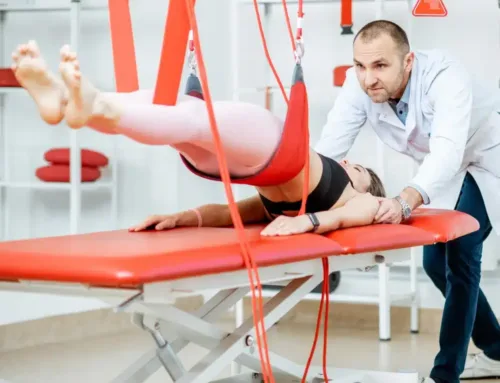Purpose: To determine the impact of a Sling Exercise Training (SET) core stability program on postural balance, kicking velocity, functional strength, and back pain in elite level soccer players.
Method: 12 Norwegian 1st division soccer players completed 8 wk x 2 d. wk-1 SET training with a main focus on the hip and trunk area. Each training session, athletes performed 8 different highly unstable, closed kinetic chain exercises in adjustable slings. Exercise difficulty was progressed by increasing the resistance arm and degree of instability. 4 of the training group had suffered extended periods of low back pain. 9 players of similar performance level served as a control group.
Results: Balance: Mean one-legged eyes closed COP sway velocity moment decreased 45 % in the worst leg (p < 0.01) and 18% in the best leg (p = 0.113). The mean difference in velocity moment between the legs was reduced from 51% to 3% (p=0.001). No change in balance performance was observed in the control group. Kicking: Ball velocity during one-step maximal velocity kicking (preferred leg) increased significantly in the training group (3.5%,) compared to controls (-2.3 %, p = 0,04). Torso functional strength: The 4 subjects with chronic low back all reported that pain was reduced after training. The training group, and particularly chronic low back pain subjects, significantly improved in a clinical test of pelvic rotational stability (p < 0.01, see picture of test condition).
Conclusion: This unique functional stability training program involving movements performed in unstable slings clearly improved static balance and reduced low back pain. In addition, a small but significant improvement in kicking performance was observed. To our knowledge this is the first study to demonstrate a direct performance enhancing effect of a core stability training program. Functional strength training in slings appears to be an effective modality for enhancing neuromuscular control and joint stability.





